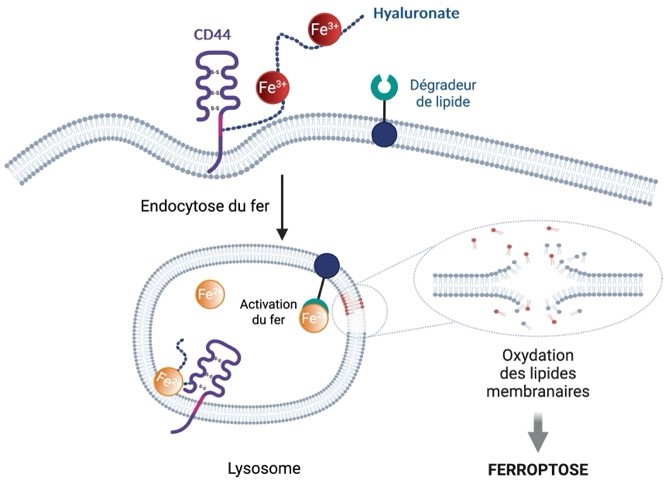Follow us on Google News (click on ☆)

A new weapon: forcing cancer cells to self-destruct
Scientists from the Institut Curie, CNRS, and Inserm have designed a new family of molecules capable of killing these resistant cells by targeting their membranes. How? By triggering a natural cell death process called ferroptosis. This mechanism uses the iron present in cells to generate a chemical reaction that destroys their membranes, leading to their death.
This work was published in the journal Nature on May 7, 2025.
Metastatic cancer cells have an advantage that becomes their weakness here: they absorb large amounts of iron thanks to a protein called CD44 present on their surface. This iron makes them more aggressive... but also more susceptible to ferroptosis. By targeting this characteristic, researchers have found a way to eliminate them.
A smart approach: turning iron against the cell
The team led by chemist Raphaël Rodriguez developed molecules capable of slipping into cells and concentrating in an area called the lysosome, a sort of cellular "recycling center." In this compartment, iron reacts with another molecule to produce radicals—highly reactive small entities that attack membranes. This process amplifies until it destroys the cell.
A molecule called Fento-1 was specifically designed to trigger this mechanism. Additionally, it is fluorescent, allowing scientists to track its path within the cell using a microscope. Initial tests are very promising: Fento-1 slows tumor growth in metastatic breast cancer models and shows strong action on samples of pancreatic cancer and sarcomas, which are notoriously difficult to treat.

Diagram of ferroptosis. Iron enters cancer cells via the CD44 protein. This accumulation allows the cell to adapt to treatments but also makes it vulnerable. By activating the iron with a specific molecule, massive membrane oxidation is triggered: the cell explodes from within.
What's next?
These results were obtained in the laboratory, using cellular and animal models. Clinical trials on humans will be needed to confirm the effectiveness of this strategy against metastatic cancers. But the idea of forcing these cells to self-destruct by triggering a controlled "internal explosion" is promising.
This work was supported by numerous organizations: the Ligue contre le cancer, the European Union (Horizon 2020 program), the Fondation pour la recherche médicale, the Fondation Charles Defforey, the Fondation Klaus Grohe, the Institut national du cancer, the Île-de-France region, the ANR, the Fondation Bettencourt Schueller, the CNRS, the Institut Curie, and Inserm.